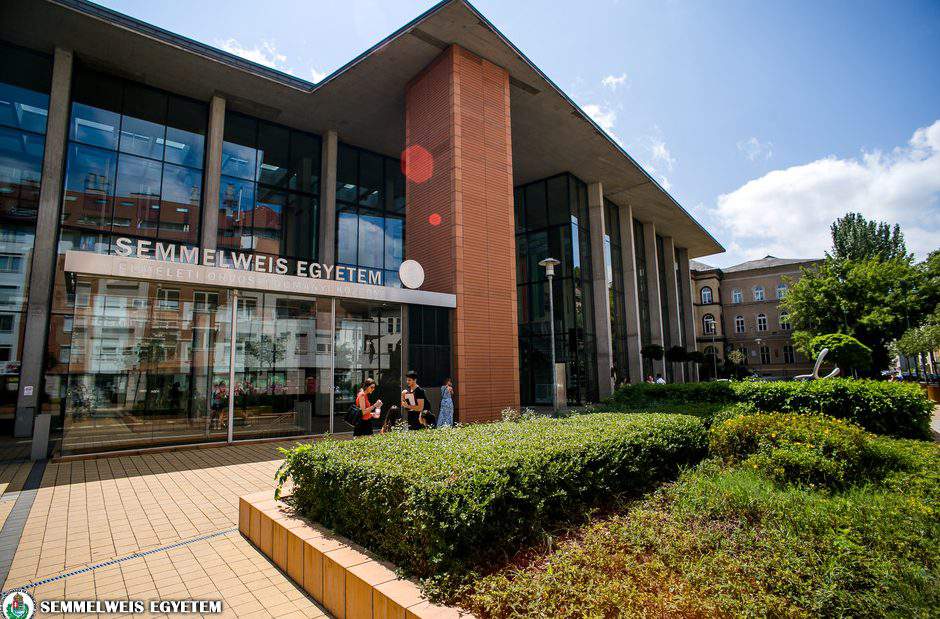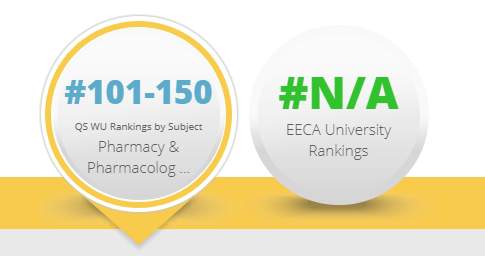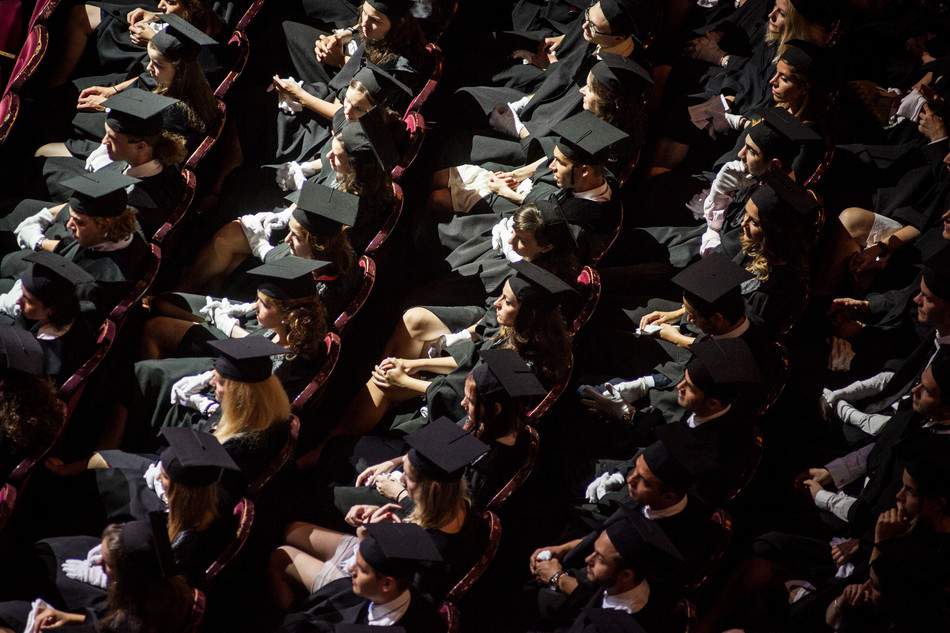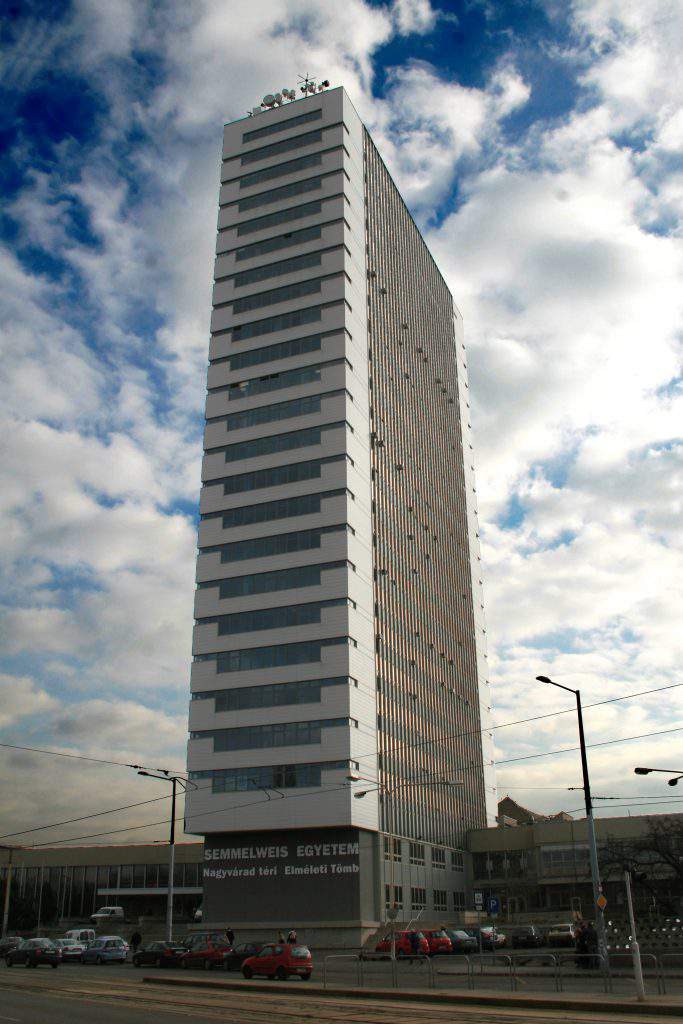The best Hungarian universities, part 4 – Semmelweis University

Lately, there has been a growing interest in Hungarian academic education on part of foreign students, most of them choosing universities sited in Budapest. In the following series, we will present some of the best Hungarian universities, hoping that during your summer trip to one of our exciting festivals, you’ve taken a deep interest in our culture and history. 🙂
Given that the number of foreign students (either visiting with Erasmus, or being full-term students) has quickly grown in the recent years, we’ve decided to give a short overview of why you should study at one of those Hungarian universities that are among the top and also offer courses in English or other widely spoken languages. We continue our series with Semmelweis University.

photo: semmelweis.hu
Semmelweis University
Hungary’s number one and oldest medical higher-institution, Semmelweis University, was founded in 1769 as the Medical Faculty of the Nagyszombat University (today: Eötvös Loránd University), at Nagyszombat (today: Trnava, Slovakia). Then, the faculty was moved to Buda, and later to Pest (at this point no one is surprised that this institution was moved too).
During World War II, the authorities tried to evacuate the Medical Faculty to Germany, but they met with resistance on the side of the teaching and leading staff and students.
After the war, the university became an independent medical institution.
If you’ve been following our series, then you’re probably familiar with the name changes. It used to be called the Budapesti Orvostudományi Egyetem, or Semmelweis Orvostudományi Egyetem (between 1969 and 2000). In 2000, the Semmelweis Orvostudományi Egyetem, the Imre Haynal University of Health Sciences and the University of Physical Education merged, becoming Semmelweis University.
The university now is named after Ignác Semmelweis, who was nicknamed ‘the saviour of mothers’. He was an obstetrician, who devised a way to prevent puerperal fever, thus saving the lives of new-born children and of their mothers’.
First, most, best
The biggest and best-furnished medical and biological collection in Hungary is in the ownership of Semmelweis University. It is also the biggest healthcare provider in Hungary, with a staff of 9000, out of whom 1500 are teaching staff.
The General Medicine program is even recognised by the World Health Organisation.
The Times Higher Education listed Semmelweis among the best 401-500 universities in the world in 2017. Furthermore, in the 2017 edition of the QS rankings, Semmelweis placed 262th, while it placed in the best 101-150 in the field of pharmacy and pharmacology.

photo: topuniversities.com
Among the notable Alumni of the university are Albert Szent-Györgyi (discoverer of Vitamin C), Pál Schmitt (President of Hungary, 2010-2012) and Ádám Marosi (modern pentathlete).
What to study at Semmelweis University?
Semmelweis University consists of one PhD School and five faculties:
– Faculty of Dentistry
– Faculty of Health and Public Service
– Faculty of Health Sciences
– Faculty of Medicine (the most popular faculty among national and international students)
– Faculty of Pharmacy.
Two years of general medical studies, three years of clinical studies and one year of rotating internship will eventually lead you to get your degree as a Doctor of Medicine.
According to the university’s website, students find employment shortly after graduation: it usually takes only two months to find a job for Semmelweis Alumni.

photo: semmelweis.hu
International students and foreign language teaching
The university is proud of having 200 new international students starting their studies at this institution at the beginning of each academic year. There are altogether (not just freshmen) 10,000 international students studying at Semmelweis University, from over 60 nations and 5 continents. This means that 18% of the student body is represented by foreign students, most of them coming from Germany.
There are various fun and academic events organised by the student body, but we would like to tell about the two most important with regards to the integration of international students:
the Semmelweis Carnival and the Freshman’s Day, where Hungarian and foreign students can get to know each other better,
so that no one will feel out of place. Semmelweis has a well-built Erasmus network, so don’t worry, you can study there even if you’re not a full-term student.
At Semmelweis University you have the chance to pursue your studies in German (since 1983), English (since 1987), Italian, and, of course, Hungarian. International students have to take Hungarian language courses in their first two years, as to be able to communicate with patients during their clinical studies and internships.

International students have to take entrance exams in English. They can do that in several European countries, like in Israel, North-America, Asia or Africa, so no matter where you’re from. The entrance exam consists of three parts. First, there are multiple choice tests in Biology, Chemistry and English language, this is followed by an oral exam in these three fields, and finally, a personal interview rounds up the exam, as to find out how interested and how committed the applicant is in their chosen professional field.
Sports
It is compulsory to take physical education courses at Semmelweis too during the first four semesters (first two years). Students can choose from sports such as water polo, volleyball, basketball, handball, football or jogging, or they can simply go to one of the university’s gyms. Of course, if you’re interested in taking PE optionally, you can do that too at one of 38 sporting facilities.
The Semmelweis University’s Centre for Physical Education and Sports organises ski camps, water sports camps and even rock climbing.
These activities are great to have fun with your course mates, travel a bit and stay fit.
Location
Some might find it strange, but this particular university does not have a campus in the traditional sense of the word. The faculty buildings are scattered across Budapest, more precisely at the Pest side, usually
near the stops of Metro line 3:
near Corvin negyed station, Klinikák station, and Nagyvárad tér station. The best-known out of all the ‘campuses’ is the Nagyvárad téri Elméleti Tömb.
The university’s Elméleti Orvostudományi Központ was established in 2008, and won a number of architecture awards since. It consists of professional laboratories and offices, seminar rooms, auditoriums and student laboratories.

photo: semmelweis.hu
Contact
Central administration:
Address: 1085 Budapest, Üllői út 26
Phone number: 0036 1 459 1500
featured image: http://semmelweis.hu/mediasarok/epuletek/ D. Kiss. Balázs
Ce: bm
Source: Daily News Hungary, http://semmelweis.hu/





